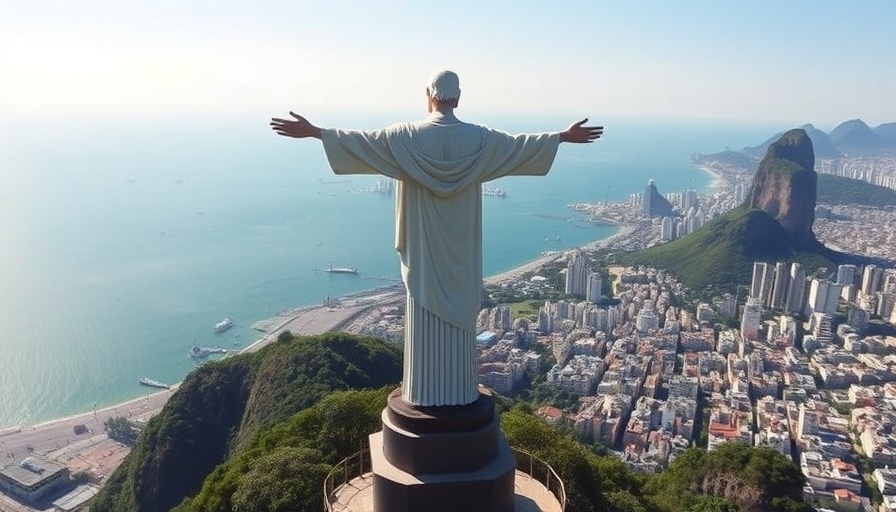
Christ the Redeemer: A Beacon of Hope and Unity
On October 13, we commemorate the opening of the iconic Christ the Redeemer statue, a towering emblem of faith and community located in the hills above Rio de Janeiro. At 98 feet tall with arms spanning 92 feet, this majestic statue has not only become a symbol of Brazil but also a testament to human ambition and craftsmanship.
Originally conceived in the early 20th century, architect Heitor da Silva Costa envisioned a more complex design of Christ bearing a globe and cross. However, with the collaboration of artist Carlos Oswald, the simpler yet powerful image of Christ with outstretched arms came to life, embodying a warm embrace to the city below.
The Ingenious Engineering Behind a Wonder
Constructed between 1922 and 1931, Christ the Redeemer claims the title of the largest Art Deco statue in the world, built primarily from reinforced concrete. Public funds, heavily supported by the Catholic Church, facilitated this monumental project, which was initially proposed as a response to what some perceived as a growing “sea of godlessness” after World War I. The statue’s base is nearly 26 feet raised atop the Corcovado mountain, providing it with an unmistakable presence that is both imposing and inviting.
Leaving a Lasting Legacy
Over the years, Christ the Redeemer has undergone numerous restorations to preserve its integrity against the elements. With an average of 2 million visitors annually, the statue is continuously monitored and maintained to ensure its long-standing status as a national treasure. Recent renovations, including the replacement of soapstone tiles, maintain the iconic mosaic effect that visitors cherish.
A Symbol of Resilience and Community
For locals, known as cariocas, Christ the Redeemer transcends mere tourism; it represents their identity and a shared sense of belonging. Musicians and artists alike pay homage to the statue, which stands as a beloved guardian over the city. As architect Paulo Vidal aptly states, the statue’s continuing resonance underscores its role in both cultural celebration and daily life.
Turning Personal Connections into a Collective Memory
The allure of Christ the Redeemer lies not only in its grandeur but in the emotional connection it fosters. Many visitors find the experience of visiting the statue profoundly moving, often shedding tears at the sight of this majestic figure. The statue’s embrace welcomes all, reflecting Brazil’s ethos of warmth and hospitality, a reminder that every religious belief or cultural background can find solace in unity.
As we commemorate October 13, let us reflect on Christ the Redeemer not just as a landmark, but as a cherished emblem of our shared humanity, serving as a bridge that connects diverse backgrounds and beliefs under one overarching message: peace and acceptance.
If you’re inspired by the stories behind great landmarks like Christ the Redeemer, explore more narratives of hope and resilience that define our communities. Let's continue the celebration of unity and compassion across the globe.
 Add Row
Add Row  Add
Add 




Write A Comment